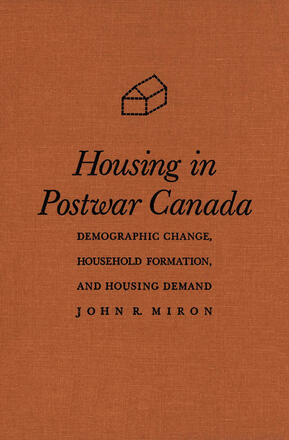
Housing in Postwar Canada
Demographic Change, Household Formation, and Housing Demand
Description
The size of Canadian households has been declining since at least the 1880s. Miron compares this trend to patterns of household size in England and the United States and argues that postwar changes in household formation in Canada were the result of several forces including the postwar baby boom, increased longevity, changes in marriage pattern, rising incidence of divorce, increased household affluence, and new forms of government assistance to housing. While aggregate growth in population, families, and households helps to explain why more housing was necessary, it does not explain changes in the kind of houses desired. Miron discusses changes in available housing stock as well as changes in structural type such as the great apartment boom of the late 1960s and the re-emergence of owner occupancy in the late 1970s. The types of data available for measuring change in the stock and sources of error in housing data are also analyzed. One of the books most important contributions is an annotated synthesis of national trends in household formation and housing demand, derived from Statistics Canada census data, and accompanied by an insightful analysis of the relation of these trends to housing stock evolution. This is the only available detailed study of these topics in the Canadian context.
Reviews
"using previously untapped Statistics Canada data and precise analytical tools, the study makes a significant and original contribution to housing and social formation in Canada. R.A. Murdie, York University